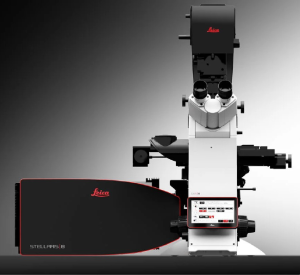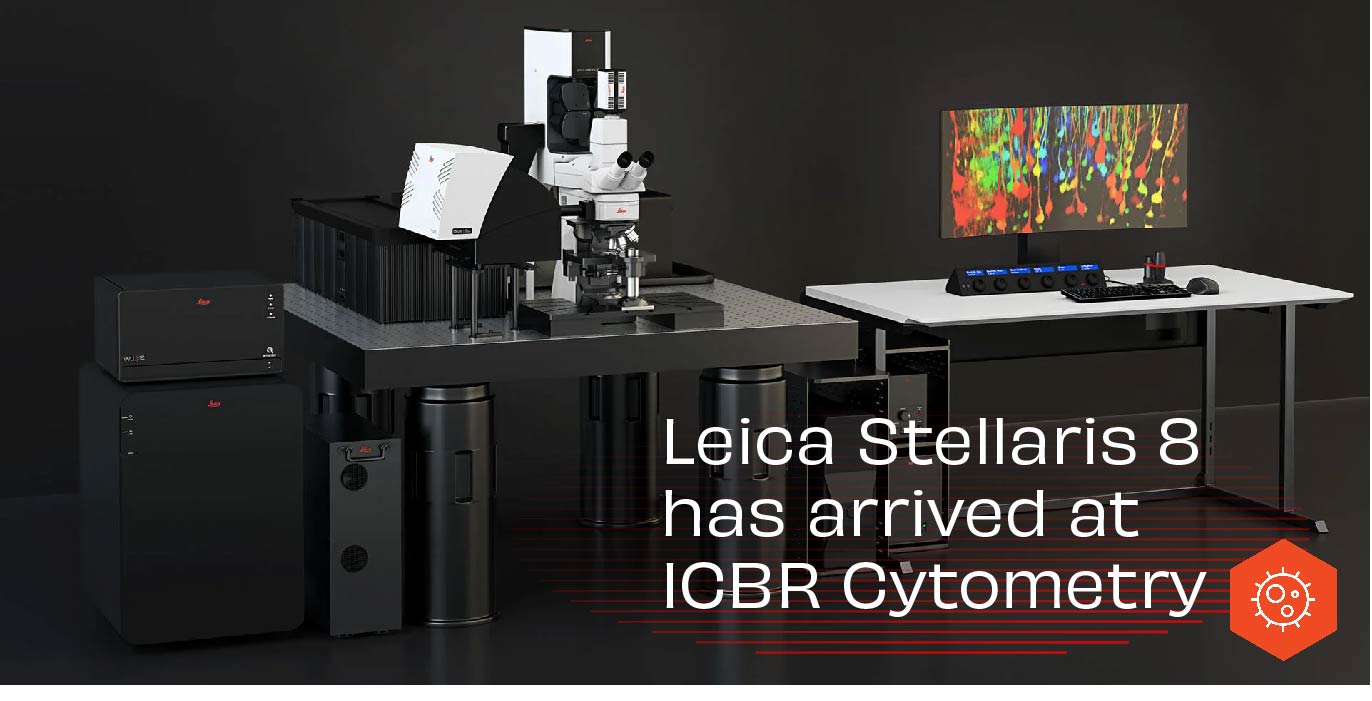UF ICBR Cytometry Acquires Leica Stellaris 8 Confocal Microscope
The UF Interdisciplinary Center for Biotechnology Research Acquires the Leica Stellaris 8 Spectral Confocal Microscope
The Interdisciplinary Center for Biotechnology Research (ICBR) at the University of Florida is excited to announce the recent addition of the Leica Stellaris 8 spectral confocal microscope to its Cytometry core. This state-of-the-art instrument promises to usher in new avenues of research and discovery for lab researchers.
The Leica Stellaris 8 stands out for its tunable-wavelength White-Light Laser (WLL) designed for fluorescence excitation. This technology allows for adjustments to any wavelength within the range of 440 to 790nm and can be defined in precise 1nm increments. Such flexibility ensures that researchers can perfectly align with the excitation peak of the target fluorophore, resulting in enhanced excitation efficiency. In addition to this, the system is equipped with a fixed wavelength 405nm laser, making it ideal for working with violet excited labels, such as DAPI or Hoechst.
“The acquisition of the Leica Stellaris 8 confocal demonstrates the ICBR’s commitment to providing world-class biotechnology expertise and instrumentation to the UF research community. This instrument contributes to our growing list of optical microscopes and we are particularly excited to be adding Leica’s White-Light-Laser and Fluorescence Lifetime Imaging technologies, two powerful new tools that will advance imaging capabilities not previously available to UF scientists.” – Dr. Steven Madore, ICBR Associate Director for Science
Transitioning to the emission side, the Stellaris 8 confocal microscope has 5 filterless detector channels. These channels are particularly notable for their user-definable emission bands, extending the detection range up to 850nm. To further aid researchers in achieving the best results, the microscope is complemented by the Leica LAS-X software, which can recommend optimal configuration options based on a comprehensive library of fluorophores.

Another significant feature of the Stellaris 8 system is the inclusion of Leica’s TauSense/FALCON package. This package offers groundbreaking imaging tools and analysis capabilities grounded in fluorescence lifetime (FLIM) measurements. The system is also enhanced with Leica’s LIGHTNING image deconvolution software, enabling researchers to delve beyond the optical diffraction limit and unearth more intricate image details and resolution.
For researchers interested on harnessing the full potential of this advanced microscope or those interested in acquiring training on the system, please reach out to the ICBR Cytometry Core at ICBR-Cytometry@ad.ufl.edu. The ICBR remains committed to its mission to provide access to world-class biotechnology expertise and instrumentation, and the acquisition of the Leica Stellaris 8 is a testament to this dedication.


